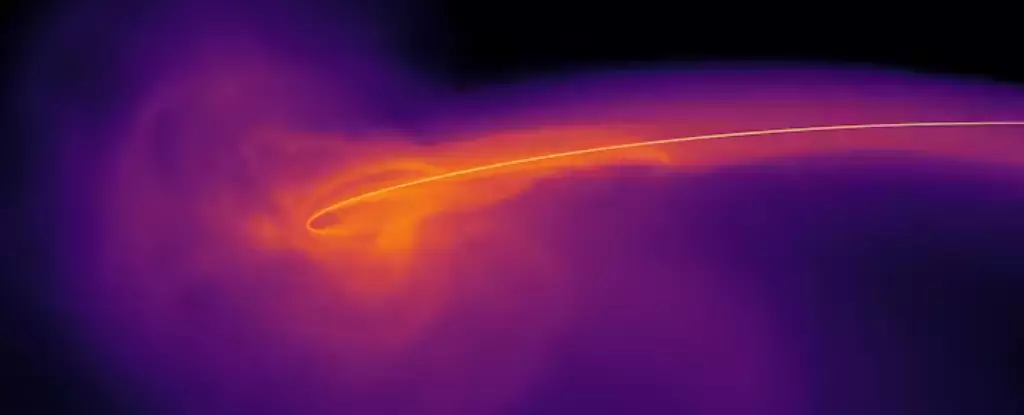Decades ago, American astronomer Jack G. Hills and British astronomer Martin Rees delved into the realm of theoretical astrophysics, introducing the concept of tidal disruption events. These catastrophic events involve supermassive black holes gravitationally tearing apart nearby stars, resulting in a celestial spectacle known as a tidal disruption event.
Recent findings, as detailed in The Astrophysical Journal Letters, have shed light on peculiar observations related to tidal disruption events. Initial theories predicted intense X-ray emissions from the accretion disc formed by the remnants of the shredded star. However, the reality defied expectations, with the glowing material primarily emitting visible light rather than X-rays. Moreover, the temperature of the debris was significantly lower than anticipated, exhibiting a mere 10,000 degrees Celsius.
To address the discrepancies between theoretical predictions and observational data, researchers turned to advanced simulations. By harnessing cutting-edge computational models, scientists have gained unprecedented insights into the intricate dynamics of tidal disruption events. These simulations, spearheaded by PhD students like David Liptai, captured the entire process from the initial spaghettification of the star to the subsequent expulsion of debris away from the black hole.
The simulations not only elucidated the gravitational ballet unfolding during tidal disruption events but also offered a plausible explanation for the observed lack of X-ray emissions. The simulations unveiled a phenomenon where the black hole, unable to fully consume the disrupted star, becomes enveloped in a massive outflow of material. This smothering effect suppresses the X-ray radiation that was initially expected, leading to the dominance of visible light emissions in the aftermath of the event.
The newfound understanding of tidal disruption events has significant implications for our comprehension of black holes and their feeding behaviors. The simulations provided a coherent framework for interpreting the unusual characteristics seen in these cosmic events, such as the expansive size of the glowing material surrounding the black hole. By unraveling the intricate mechanisms governing tidal disruption events, researchers have illuminated the enigmatic nature of these cosmic phenomena and their pivotal role in shaping the evolution of galactic nuclei.
The comprehensive simulations of tidal disruption events have offered a transformative perspective on the dynamics of supermassive black holes and their interactions with neighboring stars. By combining theoretical insights with computational prowess, scientists have navigated the complexities of these celestial events, shedding light on the underlying mechanisms that drive the dazzling displays witnessed through telescopes. The enigma of the “black hole sun” has been partially unraveled, paving the way for further exploration into the captivating realms of astrophysical phenomena.



Leave a Reply